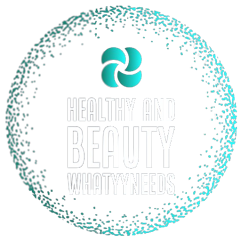Varicose veins are a common condition characterized by enlarged, twisted veins, typically found in the legs. They can cause discomfort, pain, and aesthetic concerns for individuals affected by them. While surgery has traditionally been the go-to treatment option for severe cases, many people wonder if there are alternative ways to manage and treat varicose veins without undergoing surgical procedures. This article aims to explore non-surgical treatment options for varicose veins, discussing various approaches that can provide relief, improve symptoms, and potentially prevent the need for surgery. By understanding these alternatives, individuals with varicose veins can make informed decisions about their treatment options and improve their overall quality of life.
- Varicose
veins are enlarged, twisted veins that typically occur in the legs and can
be painful or cause discomfort.
- Non-surgical
treatment options are available for varicose veins, depending on their
severity and individual patient factors.
- Lifestyle
modifications, such as exercise, weight management, and avoiding prolonged
periods of standing or sitting, can help alleviate symptoms and prevent
further progression of varicose veins.
- Compression
stockings are commonly recommended as a conservative treatment approach.
These elastic stockings help improve blood flow and reduce swelling.
- Elevation
of the legs, particularly at the end of the day or after prolonged periods
of standing, can provide relief by reducing blood pooling in the veins.
- Regular
physical activity, such as walking or swimming, can improve circulation
and muscle tone, helping to prevent and manage varicose veins.
- Sclerotherapy
is a common non-surgical treatment method. It involves injecting a
solution into the affected veins, causing them to shrink and eventually
disappear.
- Laser
therapy uses heat generated by laser energy to close off and destroy the
affected veins.
- Radiofrequency
ablation is another minimally invasive procedure that uses heat generated
by radiofrequency energy to seal the problematic veins.
- Endovenous
laser treatment (EVLT) is a specialized laser procedure that targets the
affected veins from within, leading to their closure.
- Foam
sclerotherapy involves injecting a foam solution into the veins, which
irritates the vein walls and causes them to close.
- Ultrasound-guided
sclerotherapy uses ultrasound imaging to guide the injection of a sclerosing
solution into larger varicose veins.
- Ambulatory
phlebectomy is a minimally invasive technique that involves making small
punctures or incisions to remove varicose veins.
- Intense
pulsed light (IPL) therapy is sometimes used for smaller spider veins,
which are similar to varicose veins but smaller in size.
- Herbal
remedies and supplements, such as horse chestnut extract and grape seed
extract, are believed to improve symptoms and reduce the appearance of
varicose veins, although scientific evidence is limited.
- Certain
dietary changes, such as consuming a high-fiber, low-sodium diet, can help
manage varicose veins by promoting healthy blood circulation and reducing
water retention.
- Avoiding
high heels and tight clothing can alleviate symptoms and reduce the risk
of developing varicose veins.
- Regular
leg exercises, including calf raises, ankle rotations, and leg stretches,
can promote blood flow and muscle strength, reducing the severity of
varicose veins.
- Weight
loss, if necessary, can help relieve pressure on the veins and improve
overall circulation.
- Non-steroidal
anti-inflammatory drugs (NSAIDs) can provide temporary relief from pain
and inflammation associated with varicose veins.
- Use of
cold compresses or ice packs on swollen veins can help reduce swelling and
discomfort.
- Herbal
topical creams or ointments containing ingredients like witch hazel,
butcher's broom, or aloe vera may provide temporary relief from symptoms.
- Regularly
massaging the affected areas can help improve blood circulation and reduce
discomfort caused by varicose veins.
- Lifestyle
changes, such as quitting smoking and limiting alcohol consumption, can
improve vascular health and reduce the risk of developing varicose veins.
- Maintaining
a healthy weight can reduce the strain on the veins and prevent the
worsening of varicose veins.
- Avoiding
prolonged sitting or standing by taking frequent breaks and changing
positions can reduce the risk of varicose veins.
- Some
medical-grade stockings or compression garments can be worn to improve
blood flow and reduce symptoms.
- Regular
check-ups with a healthcare professional specializing in vein disorders
can help monitor the progression of varicose veins and determine the most
suitable treatment options.
- In
cases where non-surgical treatments are not effective or the varicose
veins are severe, surgical interventions such as vein ligation or
stripping may be necessary.
- It is
essential to consult with a healthcare professional to determine the most
appropriate treatment plan based on individual circumstances and the
severity of varicose veins.
Please note that while these points provide general information, it is important to consult a healthcare professional for an accurate diagnosis and personalized treatment recommendation.
non-surgical treatment options available today. From
lifestyle modifications and conservative measures to minimally invasive
procedures such as sclerotherapy, laser therapy, and radiofrequency ablation,
individuals with varicose veins have multiple avenues to explore. These
non-surgical interventions aim to alleviate symptoms, improve blood
circulation, and reduce the appearance of varicose veins. However, it is
crucial to consult with a healthcare professional to determine the most
appropriate treatment plan based on individual circumstances and the severity
of varicose veins. By actively managing and seeking non-surgical treatments,
individuals can find relief, improve their vascular health, and enhance their
overall well-being.


